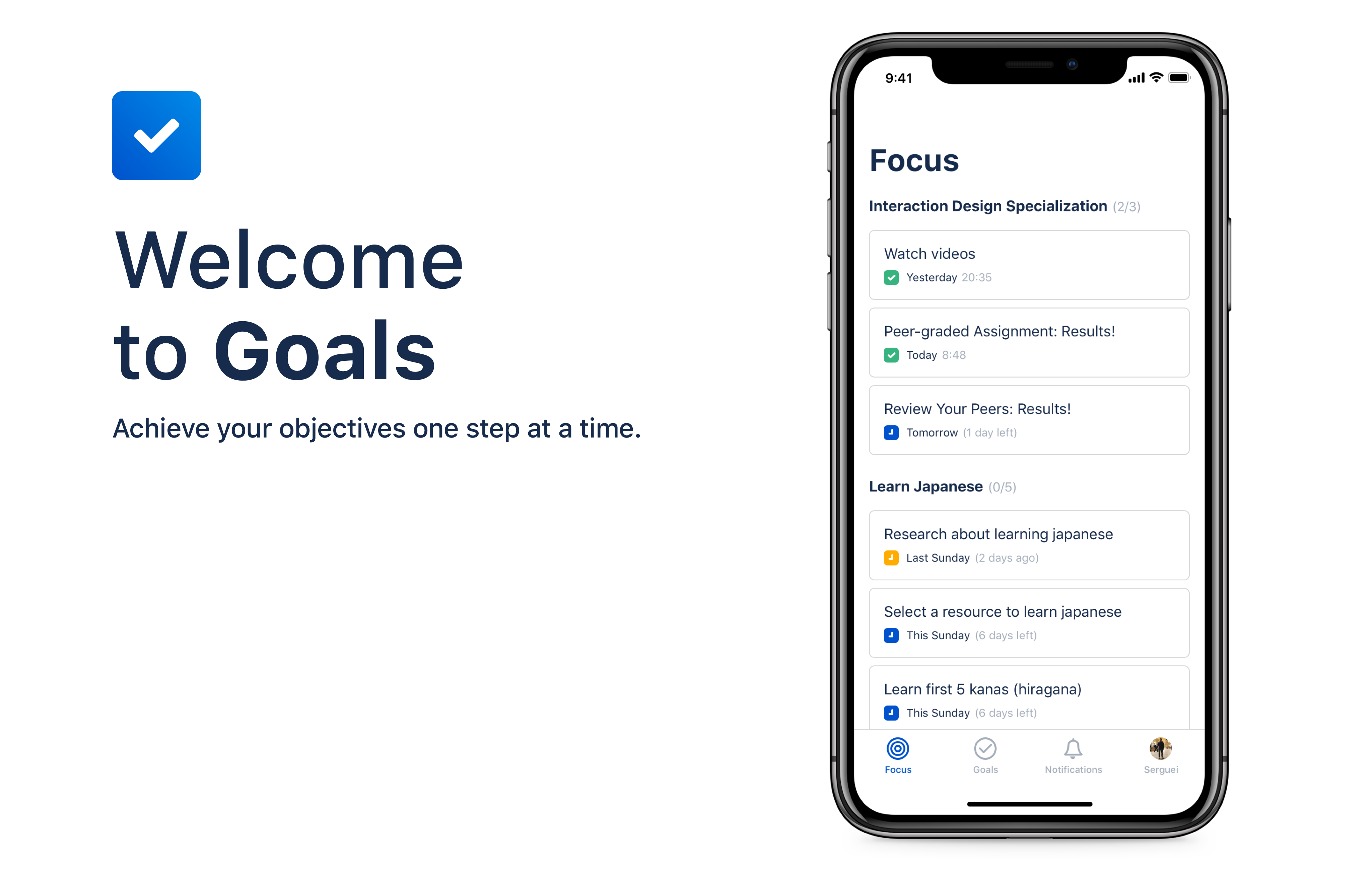
Overview
It's common to have busy days and feel that you don't have time for personal things. Imagine an application that helps you focus on your goals and keep track of them so that you could know if you are achieving them.
This is the story of Goals, my eight-week capstone project of the Interaction Design Specialization of the University of California, San Diego.
Needfinding
The first task was to decide between three topics: Change, Time and Glance. Change (of habits) is related to the way in which people invest their time, so I decided to explore the relationship between the two topics.
I conducted interviews to find out people’s current state, the way in which they plan their days and if they integrate their habits into this process.
Routines vary: some have calendars full of meetings, some focus on a delivery that must be made on a specific date. People don't seem to have a problem with planning their days and achieving their goals (even though they know they usually don't).
Despite having specific goals, people don't have a way to follow-up on them and don't know if they are getting closer. Some people block a specific time of the day to focus on their goal (adding a reminder or creating an event in their calendar), others just expect to be able to work on their goal at some point during the day.
In conclusion, even though people don't have a need to organize their days, there is a need to know if they are in working towards achieving their goals, how often they are working on them, for how long, and how far away they are from achieving them.
Ideation
Taking into account the findings of the research, I brainstormed specific opportunities for design innovation, created a list of the most insightful opportunities and wrote a Point of View (high-level strategy).
It is common to have busy days and feel that you don't have time for personal things. Let's create an application that helps us have an overview of our day and be able to organize it so that we can spend time improving our habits and track them to know if we are achieving our goals.
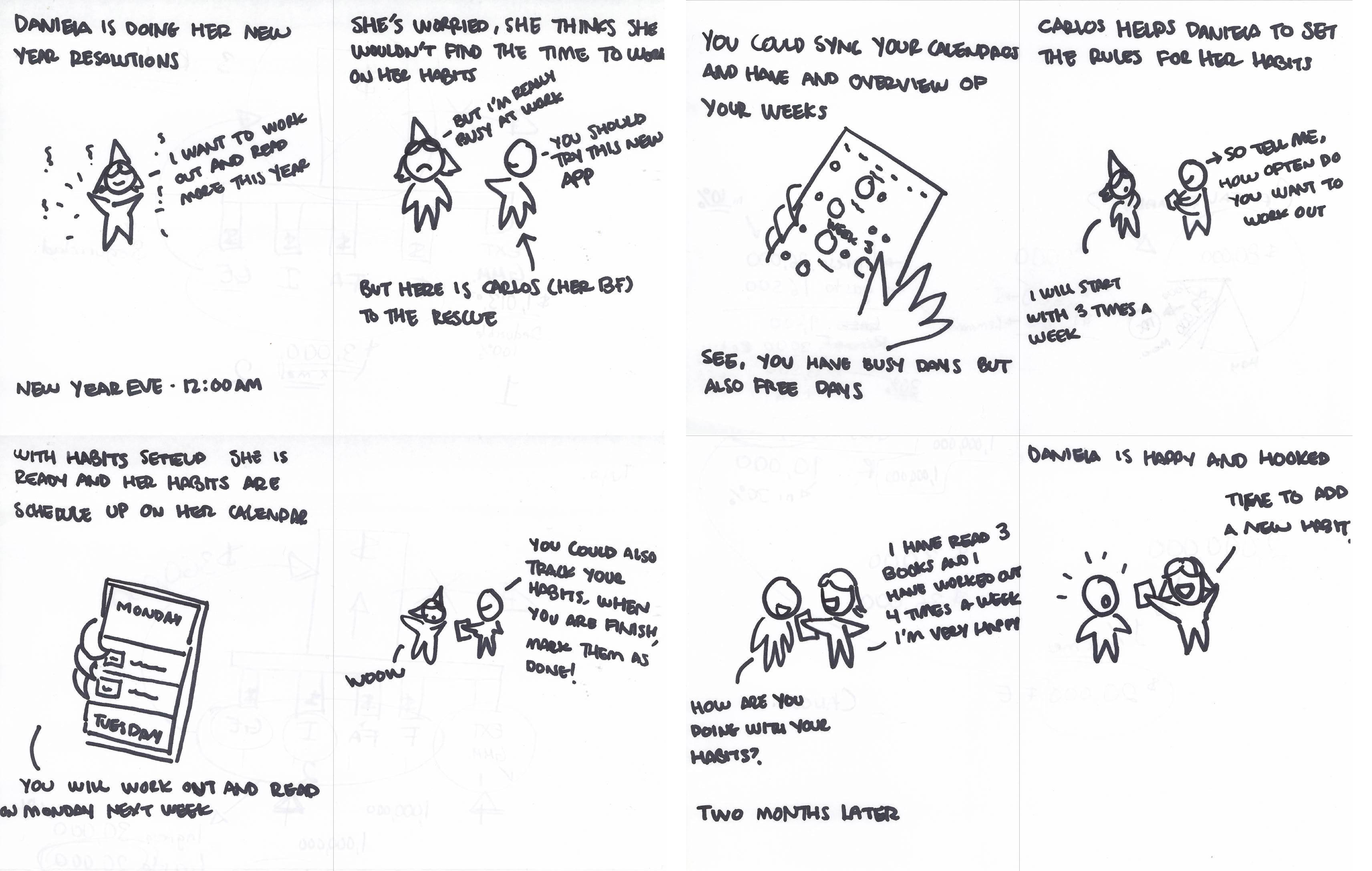
I created an inspiration board to understand what's out there (best way someone could solve their need today) and created two storyboards to explore the flowchart, GUI (Graphic User Interface) and how it is used to accomplish tasks in a real usage scenario.
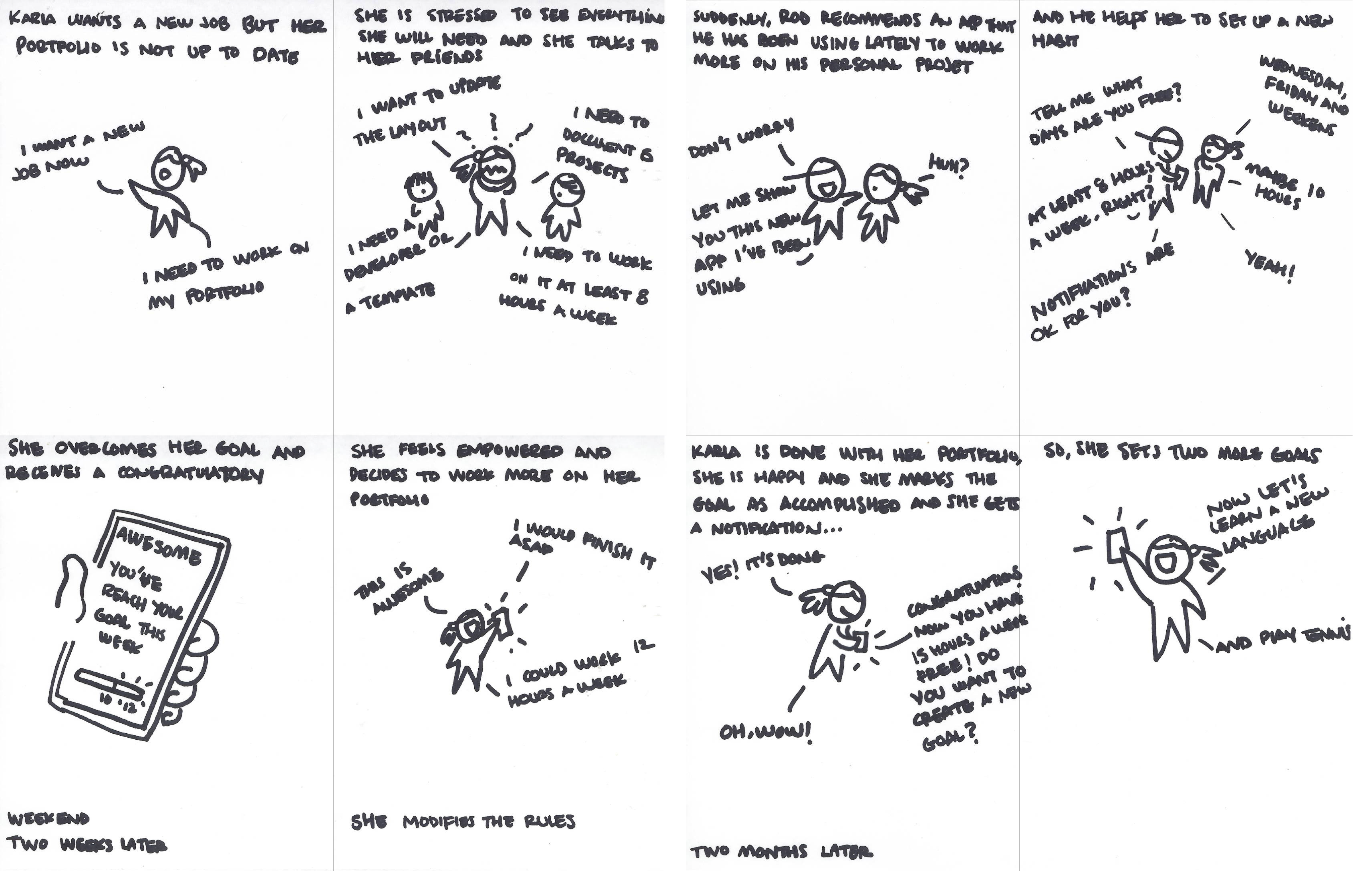
Paper Prototyping and Heuristic Evaluation
Once I had the storyboards I built a paper prototype of each of the user stories in order to conduct multiple in-person walkthroughs. After that, I performed a Heuristic Evaluation with a peer from the specialization.
The feedback helped me to better understand the users and their needs. Users found the follow-up of the goals attractive but the GUI of the application of habits seemed more organic to them.
With this, I reconsidered the strategy of the application.
Through the application, users who have many goals but fail to achieve them, can define their goals, motivations and break down the goals into small tasks (which will be displayed on a weekly basis) that will allow them to track their progress and help them to finally accomplish their goals.
Low-Fidelity Prototyping and Heuristic Evaluation
I did more research on the current state, looking for solutions that were more than a To-Do list. I took as main reference applications of follow-up of projects like Asana, Jira and Monday.
I came across the dilemma of integrating complicated flows to an application for users without technical background, so I decided to focus my flowchart in an on-boarding process.
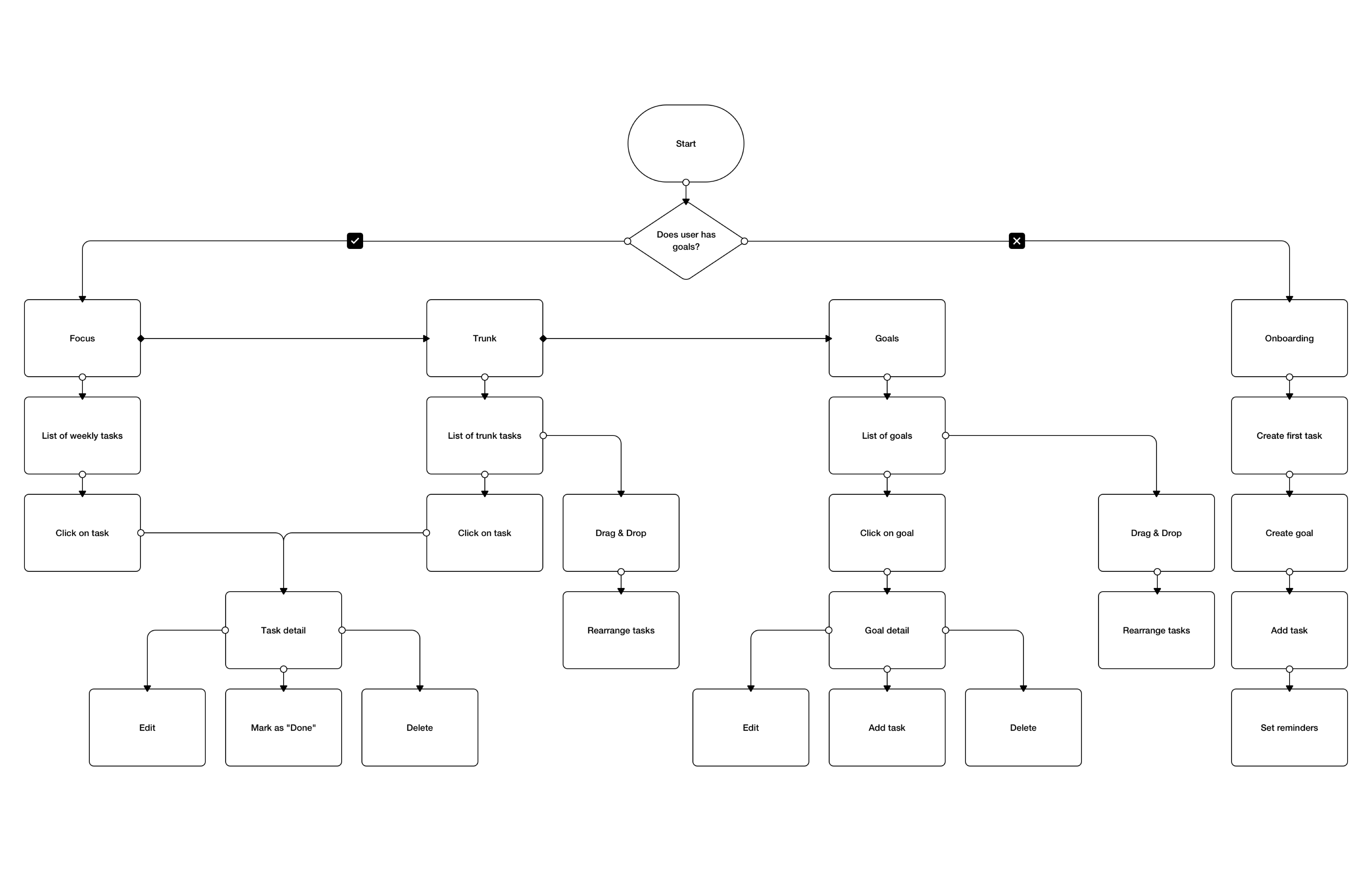
I move from the paper prototypes to a Low-Fidelity prototype using Balsamiq. The first round I focused on landing the feedback received from the tests.
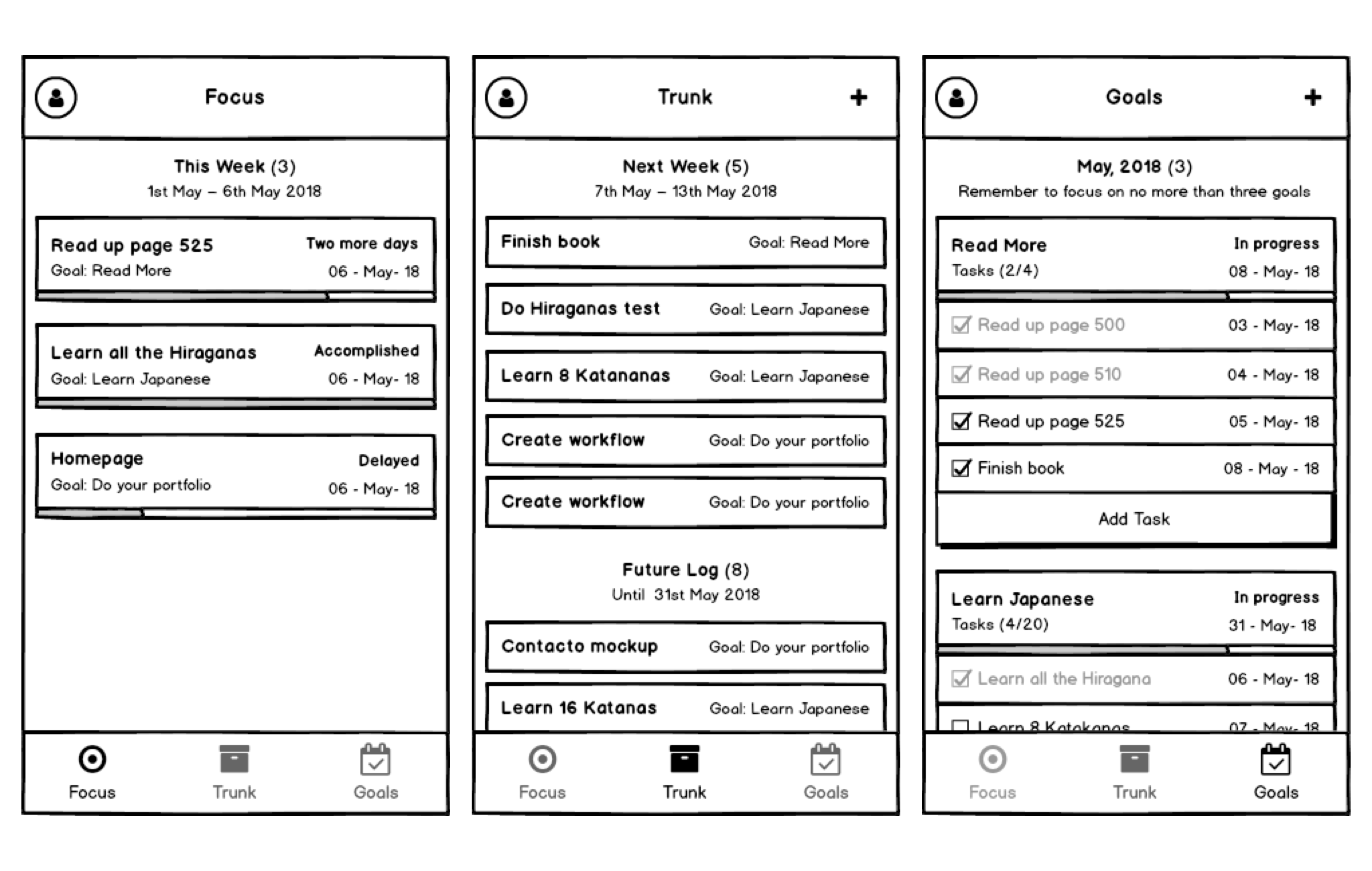
After another iteration (based on the created flowchart) I prepared a functional prototype in InVision and conducted another two in-person user studies.
The prototype helped me a lot to fix GUI details, test and improve the flows (creation of tasks within a goal confused users a lot) and discover pain points: it was not clear that the user could choose a due date for the current week.
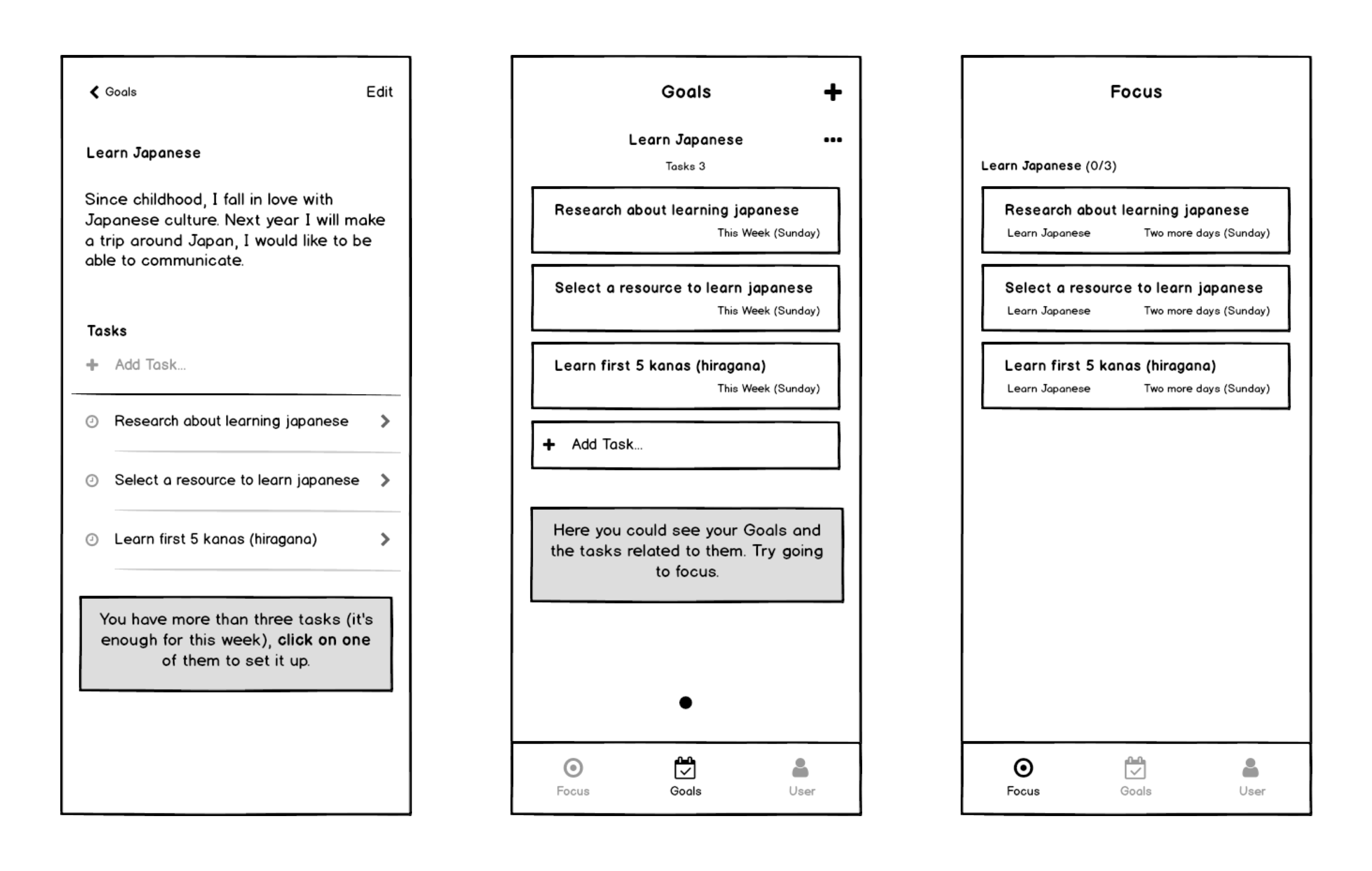
A/B Testing and UserTesting.com
I tried to improve the experience by creating two versions of the initial screen and running an A/B Testing: The first version had little information and only one call-to-action to start the On-Boarding, the second version described the secret ingredient of the application, take small weekly steps to achieve your goals.
I tested both versions on UserTesting.com. Two participants tested each version following instruction and asking to accomplish several tasks (create a goal, add tasks to that goal, set due date, see your weekly plan).
After watching the results, there was no major difference between both home screens (with more tests I could have reached a better result). The second version helped me to better understand the weekly due dates and I also received valuable feedback so I did another iteration of the on-boarding process, flowchart and GUI.
A very important lesson learned was the use of UserTesting.com. This tool is very powerful but it is necessary to prepare the instructions: tasks must be clear and related to specific screens.
High-Fidelity Prototyping
As a result of the tests, I iterated and moved from Balsamiq wireframes to the actual mockups using Sketch and I created a High-Fidelity prototype.

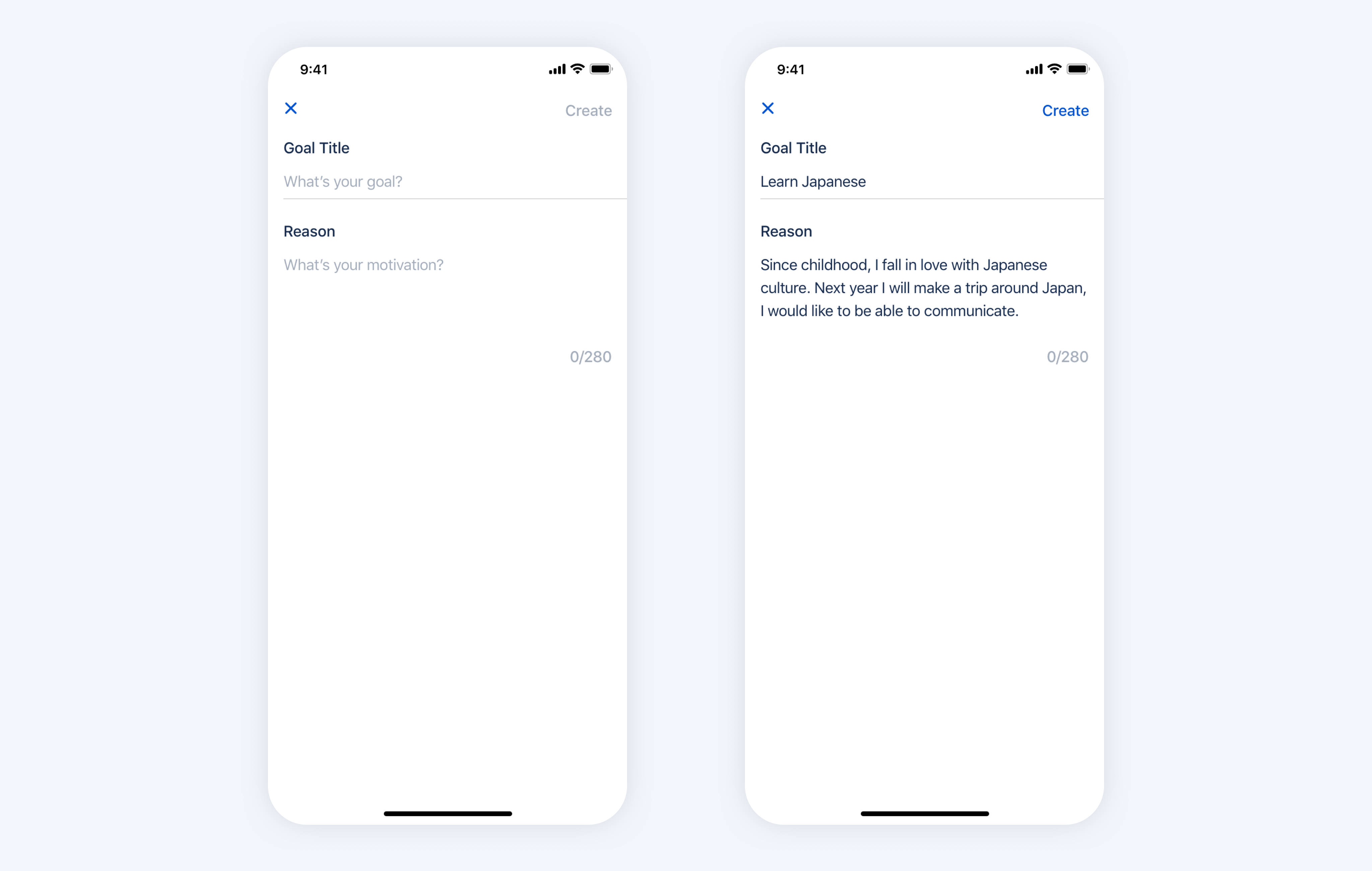
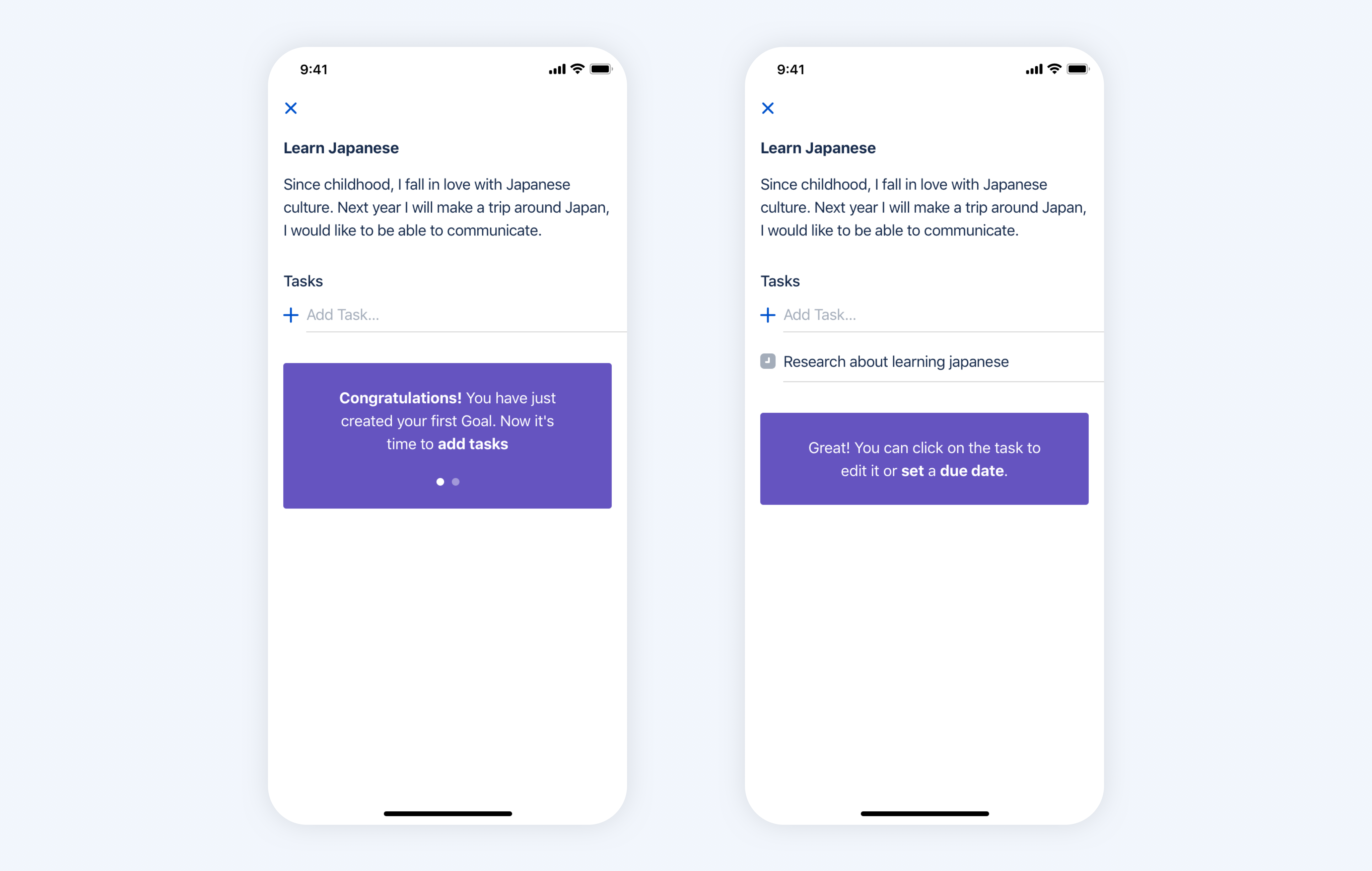
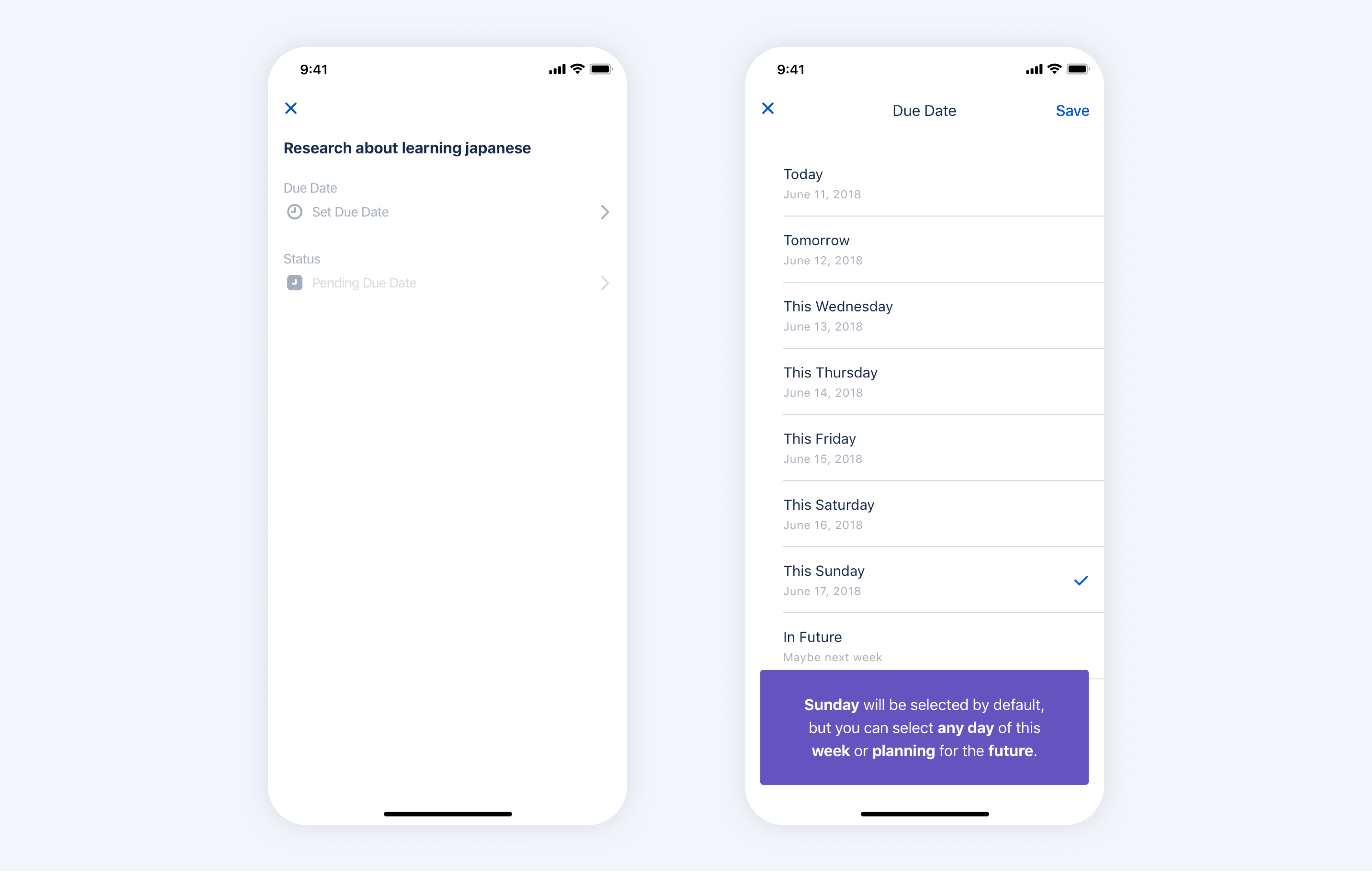
The eight-week capstone project ends here, but I would like to continue iterating on this application and take it to development.
The results of the tests helped me to better understand the needs of the user, some of them mentioned that they would use the application on a day-to-day basis and they even asked if it had a release date.